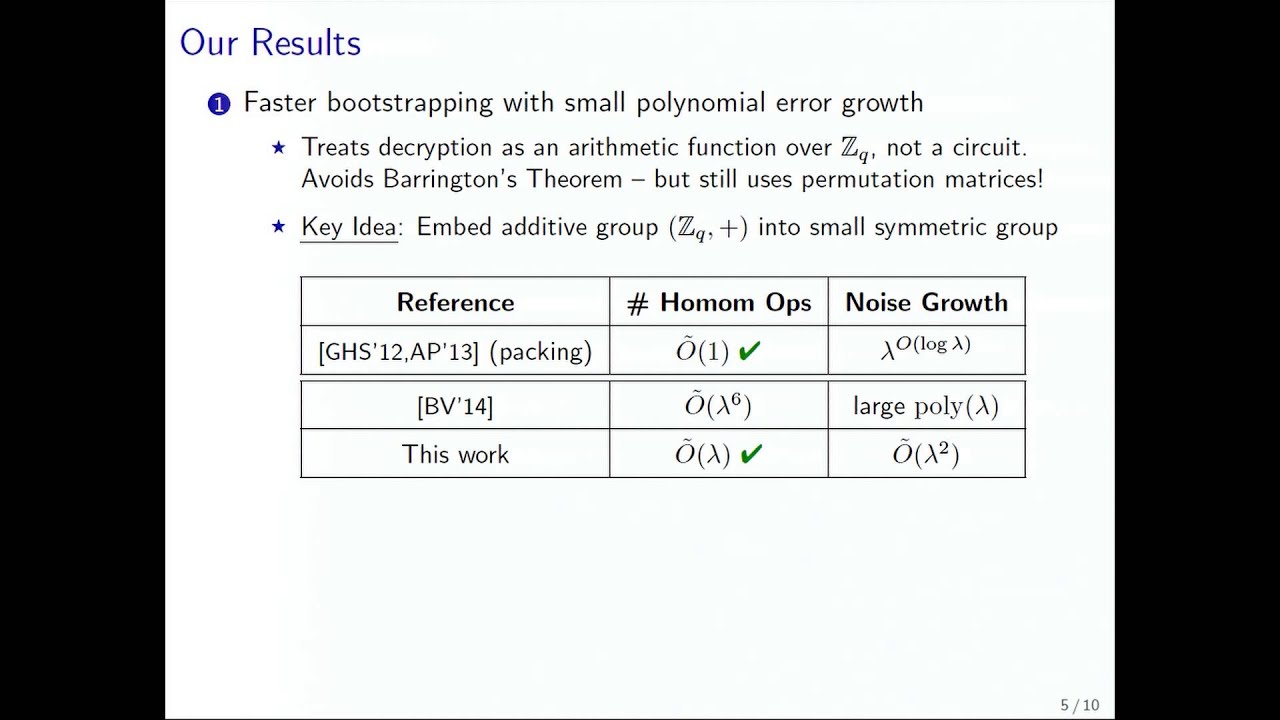Welcome to the resource topic for 2014/094
Title:
Faster Bootstrapping with Polynomial Error
Authors: Jacob Alperin-Sheriff, Chris Peikert
Abstract:\emph{Bootstrapping} is a technique, originally due to Gentry (STOC 2009), for refreshing'' ciphertexts of a somewhat homomorphic encryption scheme so that they can support further homomorphic operations. To date, bootstrapping remains the only known way of obtaining fully homomorphic encryption for arbitrary unbounded computations. Over the past few years, several works have dramatically improved the efficiency of bootstrapping and the hardness assumptions needed to implement it. Recently, Brakerski and Vaikuntanathan~(ITCS~2014) reached the major milestone of a bootstrapping algorithm based on Learning With Errors for \emph{polynomial} approximation factors. Their method uses the Gentry-Sahai-Waters~(GSW) cryptosystem~(CRYPTO~2013) in conjunction with Barrington's circuit sequentialization’’ theorem~(STOC~1986). This approach, however, results in \emph{very large} polynomial runtimes and approximation factors. (The approximation factors can be improved, but at even greater costs in runtime and space.) In this work we give a new bootstrapping algorithm whose runtime and associated approximation factor are both \emph{small} polynomials. Unlike most previous methods, ours implements an elementary and efficient \emph{arithmetic} procedure, thereby avoiding the inefficiencies inherent to the use of boolean circuits and Barrington’s Theorem. For 2^{\lambda} security under conventional lattice assumptions, our method requires only a \emph{quasi-linear} \Otil(\lambda) number of homomorphic operations on GSW ciphertexts, which is optimal (up to polylogarithmic factors) for schemes that encrypt just one bit per ciphertext. As a contribution of independent interest, we also give a technically simpler variant of the GSW system and a tighter error analysis for its homomorphic operations.
ePrint: https://eprint.iacr.org/2014/094
Talk: https://www.youtube.com/watch?v=tczcle2T-Ak
See all topics related to this paper.
Feel free to post resources that are related to this paper below.
Example resources include: implementations, explanation materials, talks, slides, links to previous discussions on other websites.
For more information, see the rules for Resource Topics .
